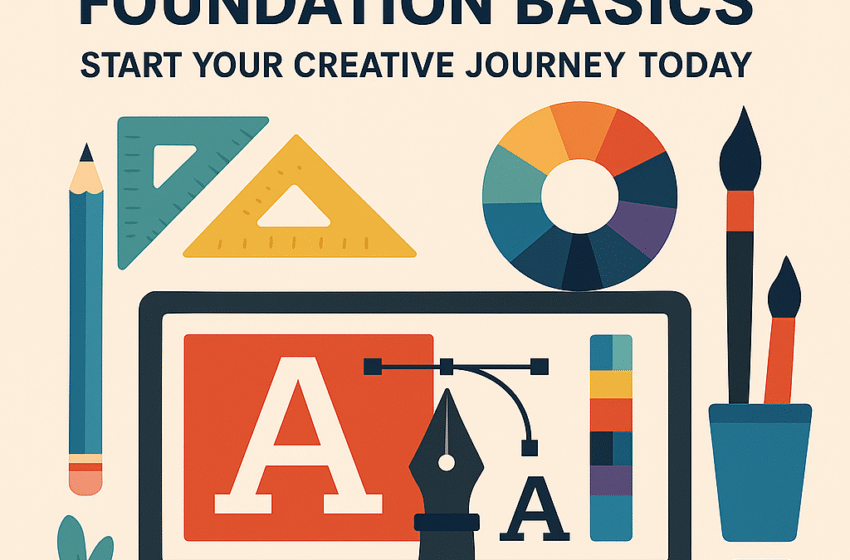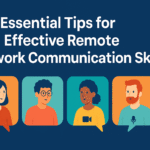

Graphic design foundation basics are the key stepping stones you need if you’re just starting — and yes, they matter just as much as any flashy software trick. I remember feeling overwhelmed at first, and you might too. But once you master these basics, they’ll become your creative compass.
Design isn’t just about making things look good. It’s about communication, strategy, and structure. You might have a great idea, but without a strong foundation, that idea could fall flat. That’s where these principles come in. And the best part? They aren’t hard to learn. With the right mindset and guidance, you’ll start applying them naturally.
Why Graphic Design Foundation Basics Make a Big Difference
They say mastery starts with fundamentals. By focusing on graphic design foundation basics, you ensure your creative work is built on a solid framework. And guess what? It’s exactly what so many lead magnet searches — high intent, low competition — are looking for. Plus, it’s evergreen; you’ll use these concepts throughout your design career.
When I started, I thought good design was all about aesthetics. Fonts, colours, photos. But I quickly realised that without the core principles, my work looked amateur. It’s like building a house without a blueprint.
Graphic Design Foundatin Basics – Core Principles You Need
Start with these pillars:
- Contrast – Can you spot where the eye lands first? Great design guides the viewer through contrast in size, colour, and weight.
- Alignment – Does everything line up? Visually and conceptually. This builds structure and makes your design feel intentional.
- Repetition – Do you see recurring styles or patterns? Repetition helps reinforce a brand and ties everything together.
- Proximity – Is related content grouped together? It tells the viewer what belongs and what doesn’t.
I used to struggle with proximity. I’d space elements evenly, but not logically. Once I learned the principle, everything clicked. Suddenly, people were complimenting my “style”. But it wasn’t style. It was understanding.
Pegon Academy’s beginner-friendly graphic design course offerings focus on these fundamentals through weekly hands-on assessments (finelib.com, alison.com).
Graphic Design Foundation Basics and Tool Skills
You don’t need every tool out there. Instead, I recommend starting with one or two: Canva for instant wins, plus Adobe Photoshop or Illustrator for deeper control. Pegon Academy’s live UI - UX/Product Design and Video Editing/Motion Design camps are perfect for gaining real tool experience (pegonacademy.com).
In the beginning, I used Canva religiously. It gave me templates and structure. Then I moved to Adobe. That’s where I learnt about masks, layers, and vector graphics. If you’re serious, you’ll eventually want both. But don’t rush it.
Another tip? Learn shortcuts. Knowing how to duplicate, align, resize and group with just keys will change how you design forever. It saves time and gives you flow.
Build Real Projects
Nothing cements learning like actual work. I sketched my first logo, designed a mockup poster, then built a blog header. You should too. Here’s what to try:
- Logo: Apply typography and color theory.
- Social Graphic: Use alignment and repetition.
- Poster or Header: Practice hierarchy and visual balance.
Don’t just follow tutorials. Set small goals: redesign your CV, make a fake flyer for a local event, or build a carousel for your Instagram. Real-world work forces you to make decisions. That’s how you grow.
Feedback Is Gold
I still share designs online and ask, “What’s off?” When they point something out, I tweak it immediately. That iteration taught me more than any tutorial. You’ll see improvements fast.
Sometimes feedback stings. I remember being told my colour palette looked like a rainbow exploded. But they were right. I reworked it using a monochromatic scheme. Suddenly, it looked professional.
Get feedback early and often. Ask your friends. Post on Reddit or Behance. Join the Pegon Academy community forums. Just don’t create in isolation.
Deepen Your Knowledge
Internal Links on Pegon Academy:
- Explore Critical UI UX Mistakes That Are Sabotaging Your User RetentionCritical UI UX Mistakes That Are Sabotaging Your User Retention for layout insights.
- Check their blog on Top 7 Best Open - Source Software for Computer Engineering StudentsTop 7 Best Open - Source Software for Computer Engineering Students — surprisingly relevant for technical creatives (mystudentkit.com).
- You may find this Video Editing – Motion Design Training course helpful to help you boost your digital design for motion and graphic
External Links:
- Learn design hierarchy and typography tips from Smashing Magazine.
- Get colour theory and visual principles insight from Nielsen Norman Group.
A Personal Anecdote
One night, I reworked my own website banner. Swapping a font, tweaking spacing, changing a colour hue—it was a tiny change, but it clicked. That’s the moment fundamentals sank in. That’s the power of graphic design foundation basics.
I remember pausing and staring at my screen. The font suddenly felt “right.” Not because I got lucky, but because I applied contrast and hierarchy. It became a turning point.
Bonus Tips to Speed Up Your Learning
- Limit your fonts. Two per design is enough. Too many looks messy.
- Stick to a grid. Even loose grids add structure.
- Use real content. Lorem ipsum only goes so far.
- Study ads. Look at how companies like Apple or Nike structure their visuals.
The more you see, the more you internalise. Save great designs. Recreate them. Remix them.
Quick Recap
| Step | Action |
|---|---|
| 1 | Learn foundational design principles |
| 2 | Start with Canva or Adobe tools |
| 3 | Create real-world projects |
| 4 | Seek feedback and iterate |
| 5 | Read expert blogs & keep refining |
FAQ
Q: Do I need Adobe software to start?
A: Not at all. Canva is beginner-friendly and powerful enough.
Q: How fast will I improve?
A: Within 4 - 6 weeks of consistent practice — especially if you engage in a structured program like those offered by Pegon Academy (coursera.org, akogunacademy.com, andacademy.com, pegonacademy.com).
Q: Can I freelance once I learn the basics?
A: Absolutely. Many designers start taking small jobs after just a few months. Just be transparent with clients and keep learning.
Conclusion
By focusing on graphic design foundation basics, you’re investing in a creative future that pays off every project, every time. Now it’s your turn: pick a project, choose your tool, and apply what you’ve learned step by step. When you feel ready, check out Pegon Academy’s live cohorts in UI - UX or Video/Motion Design — real-world, mentor-led, and perfect for cementing your skills.
Call to Action:
Ready to level up? Sign up with Pegon Academy for an immersive 3 - 6 month camp and build your portfolio with mentorship and certified experience. Start with the foundation, and you’ll design like a pro before you know it.




